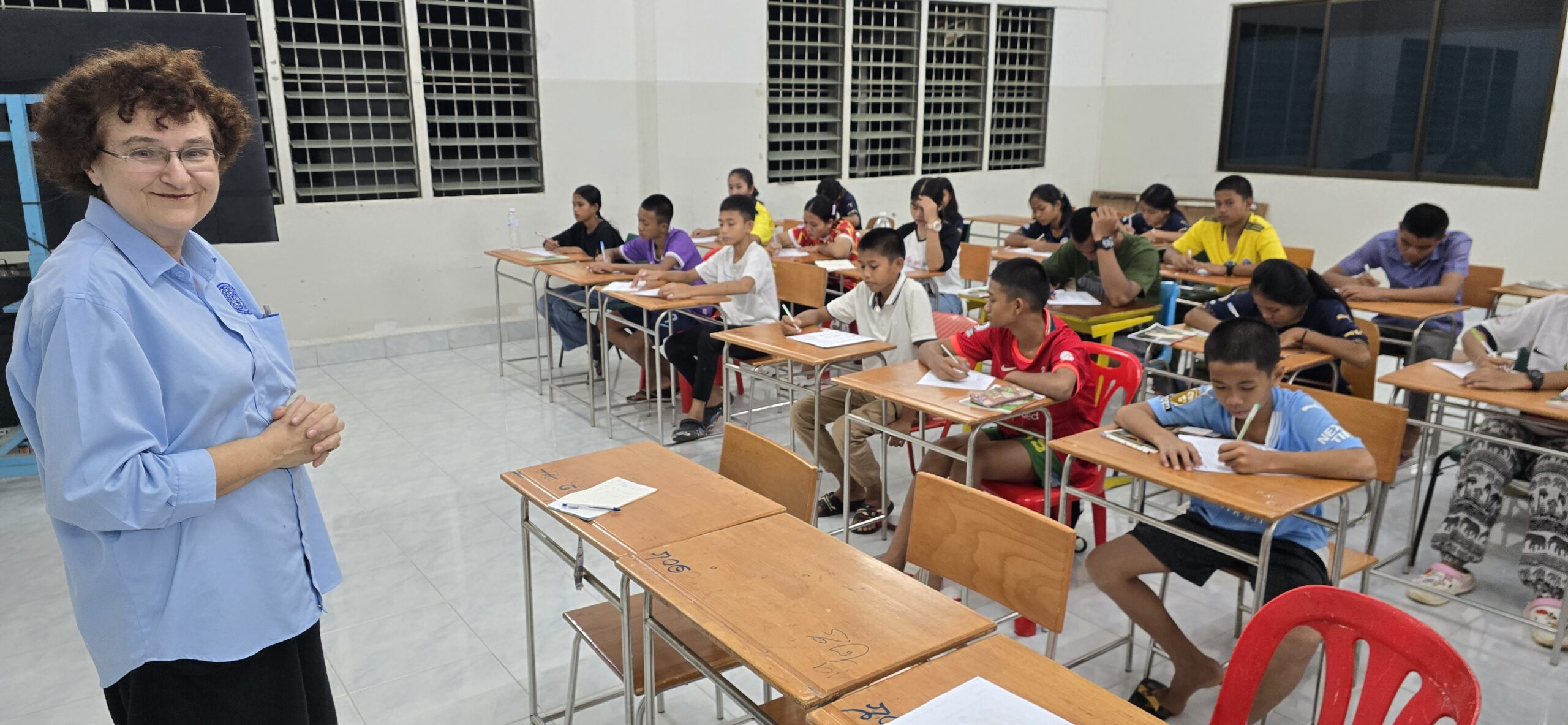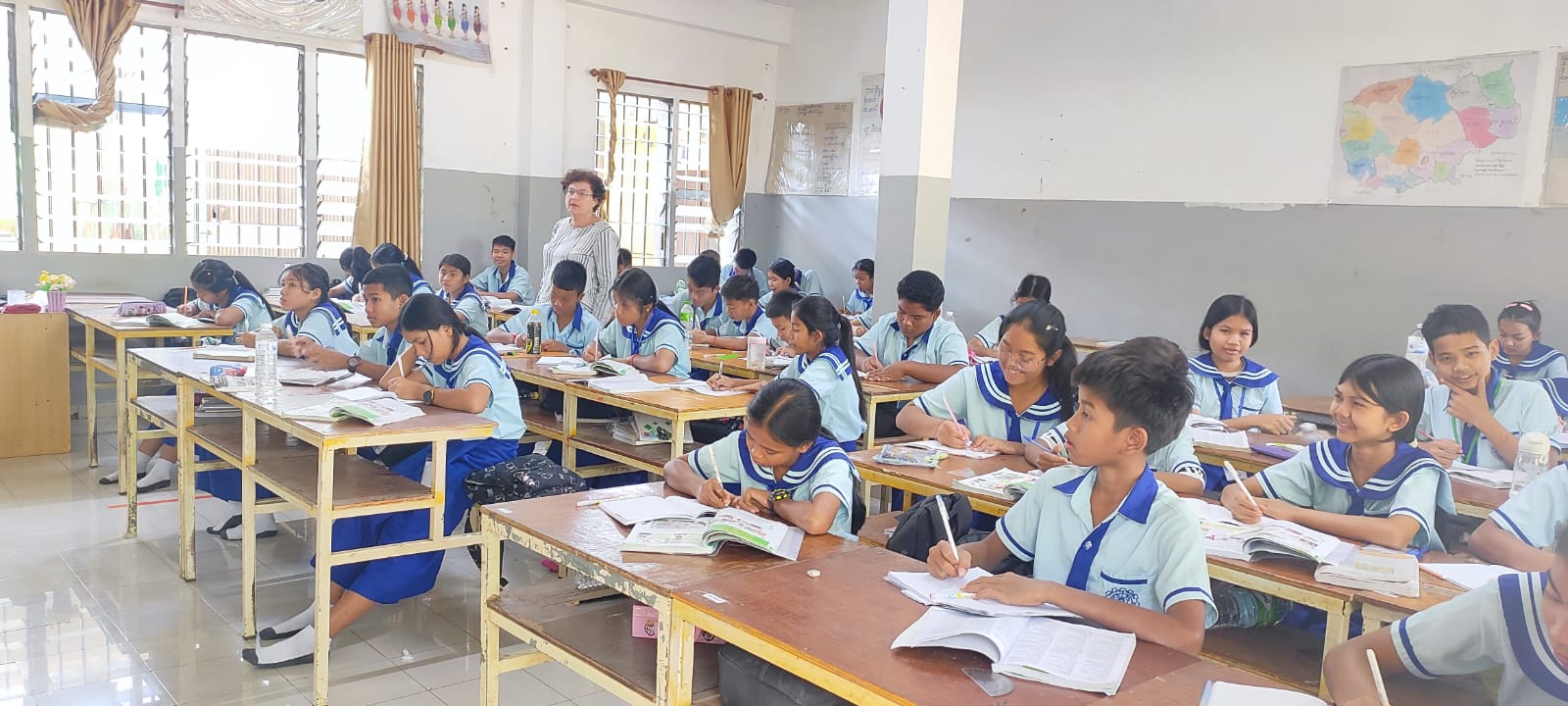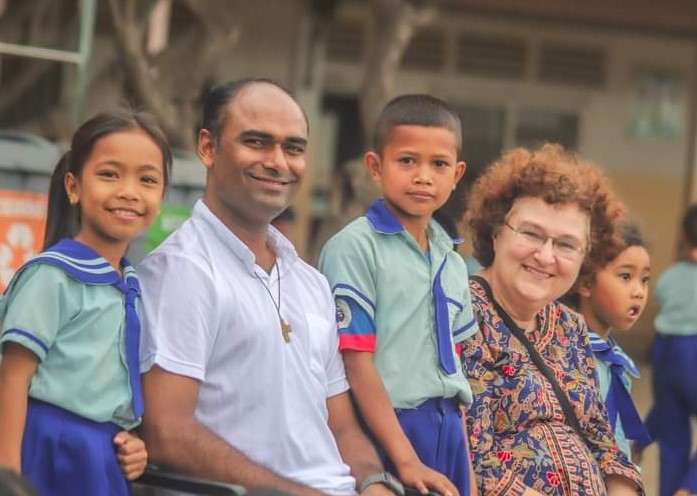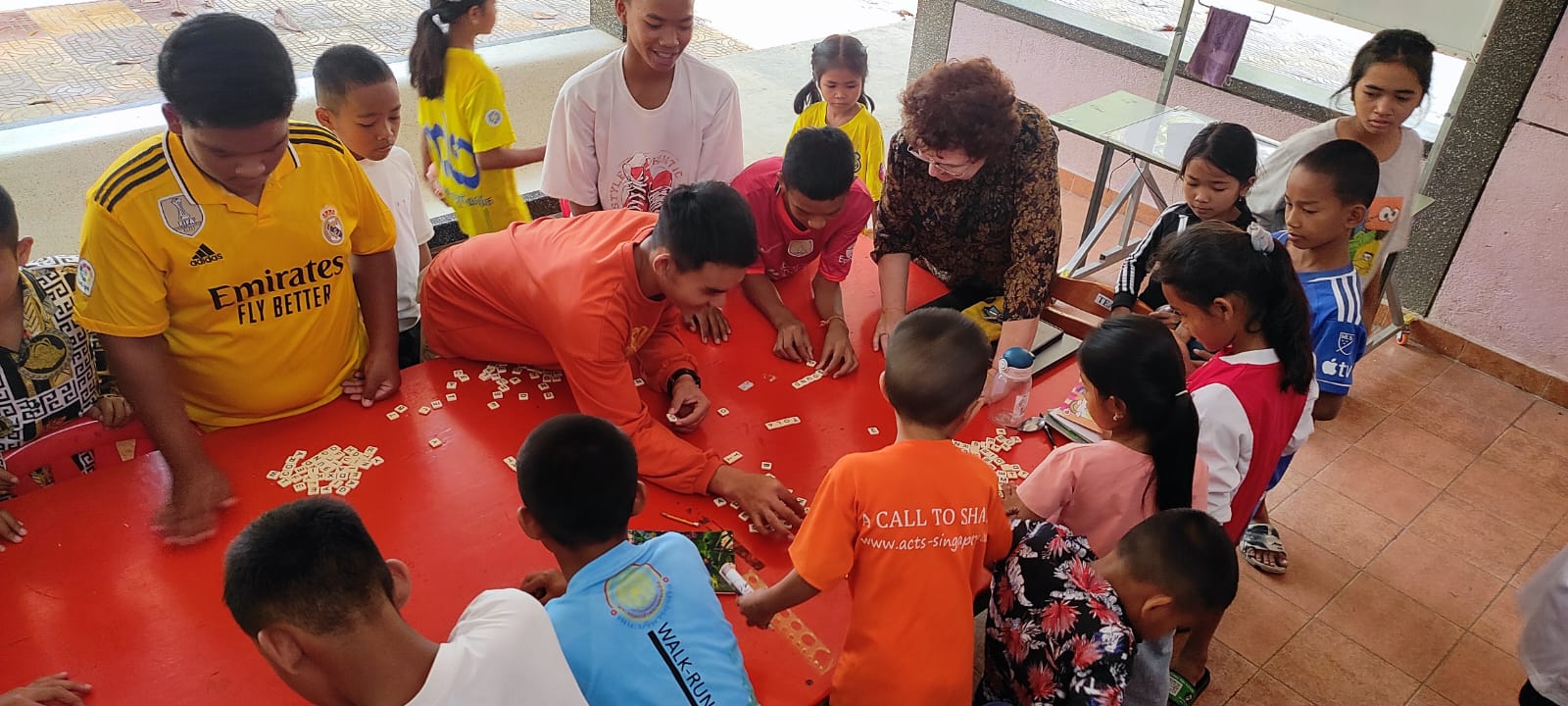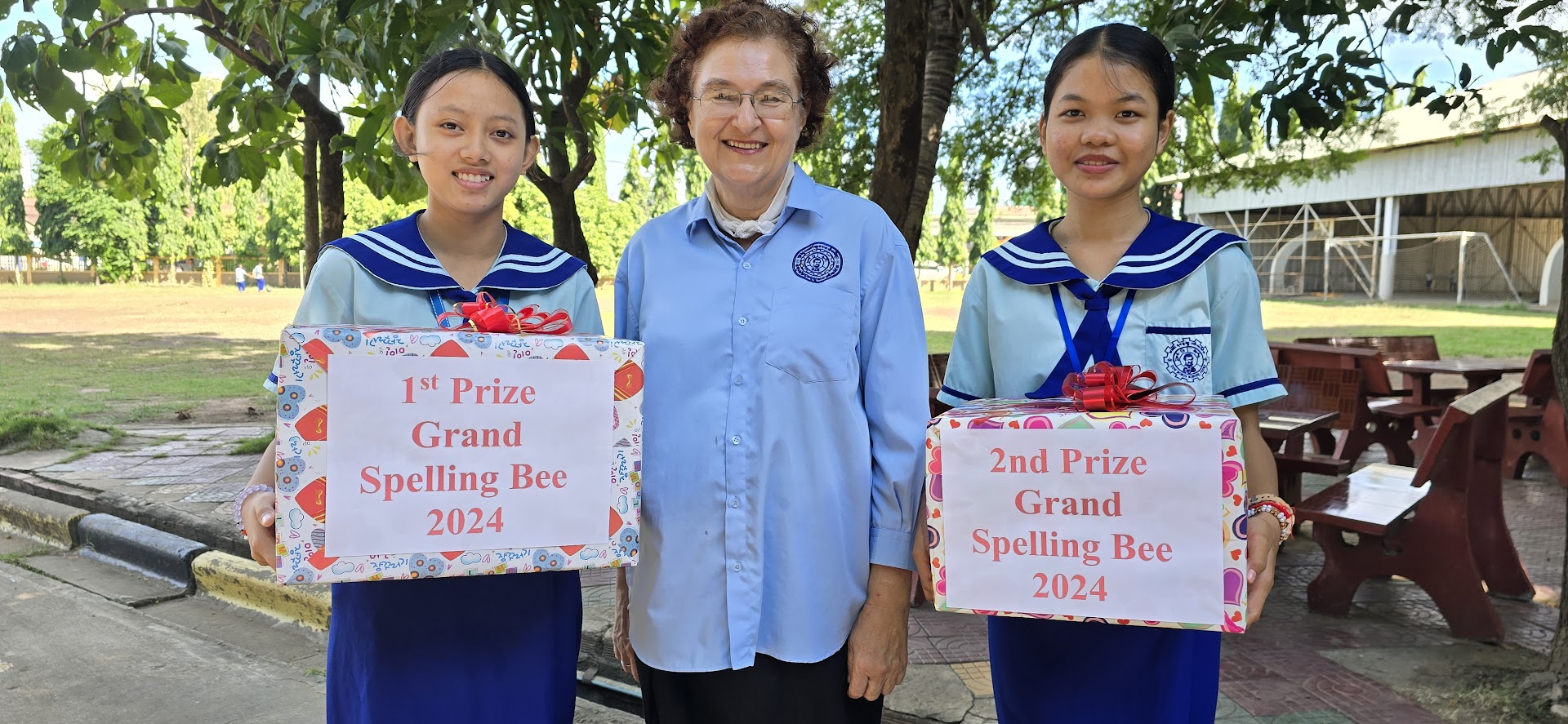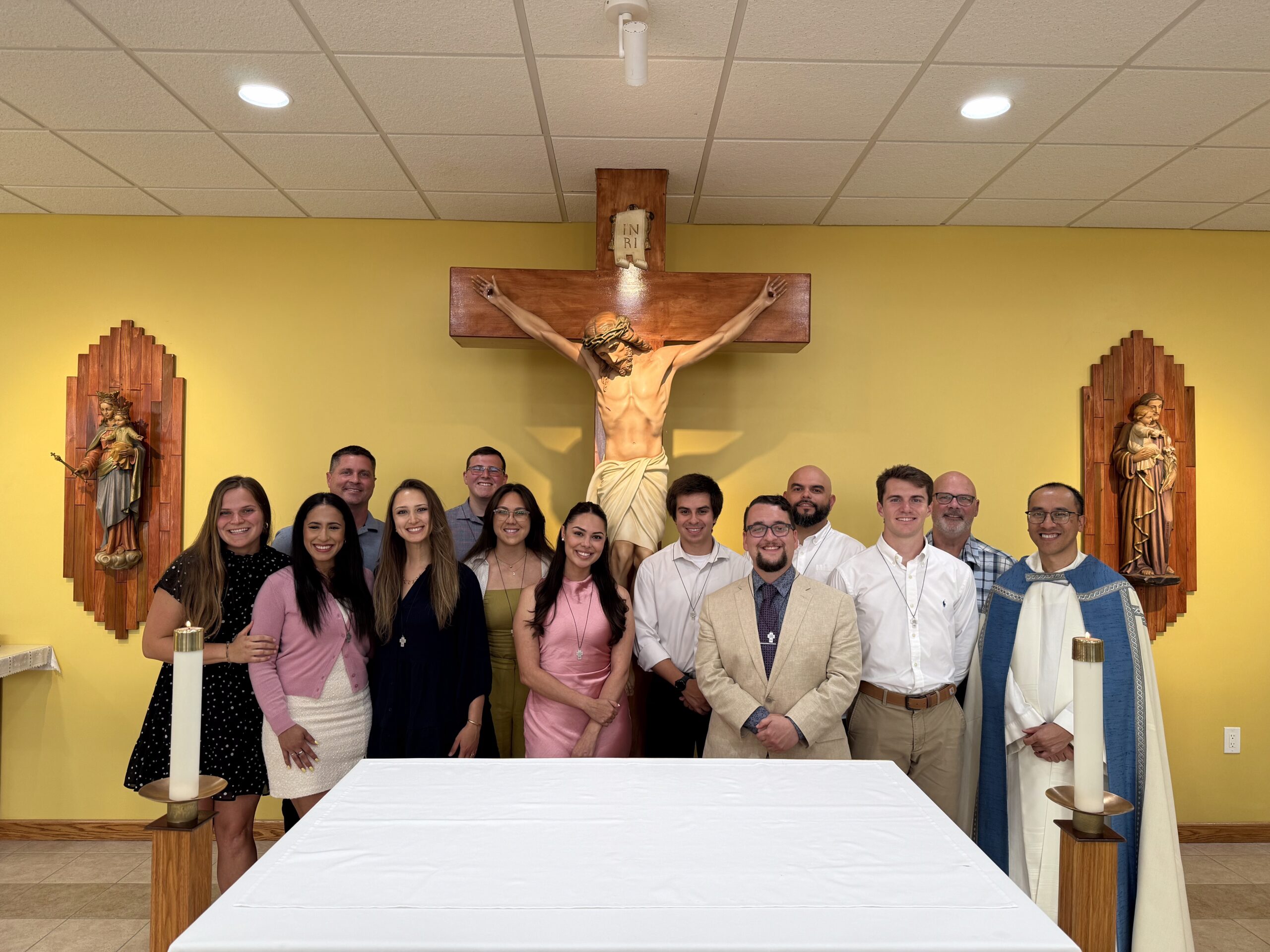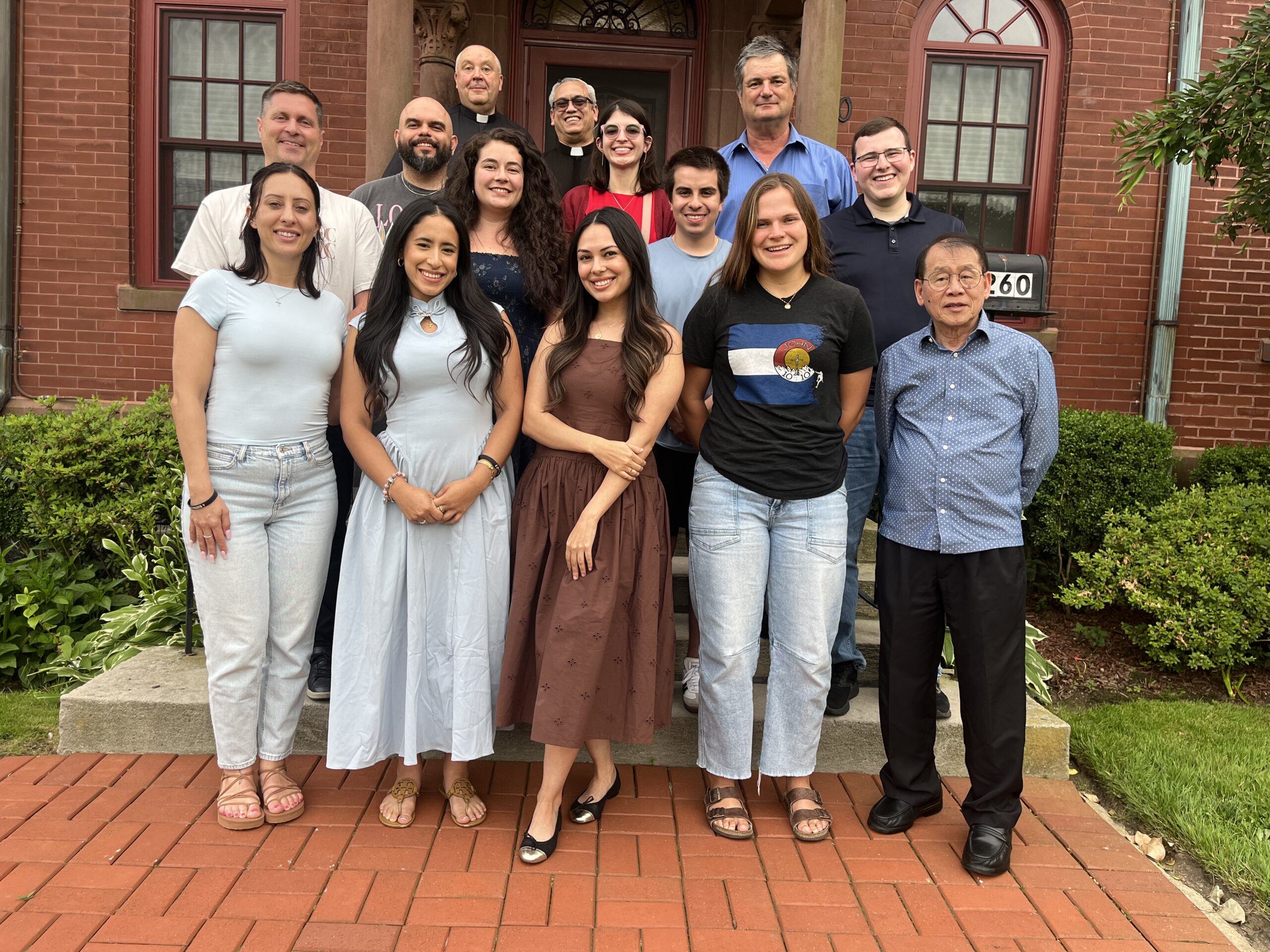Editor’s Note: Marge teaches English at Don Bosco Poipet. First established in 2001 as a modest shelter and educational project serving the area’s skyrocketing population of homeless, trafficked, and exploited children with nowhere else to turn, Don Bosco Poipet has grown to include a traditional K-12 school and vocational training center that enrolls nearly 550 students each year. Most of these students otherwise would not have the opportunity for education and require extensive wraparound support, including tuition assistance, housing, meals, and psychological counseling. Salesian missionaries provide all of these services and more, which they could not do without philanthropic support and the significant contributions of Salesian Lay Missioners like Marge.
Adam, my boss from New York, was here for a few days, visiting all our schools in Cambodia. One of the first things that visitors and new volunteers do is ride the school bus to take kids home in the afternoon. I went along, telling Adam about the town. In an unusual step, the driver guided the bus behind the railroad tracks into the slum area that Fr. Michael took me to back in January or so. He let all the last dozen kids out and then Adam and I got off with one of the Khmer primary school teachers.
We walked to the worst neighborhoods I’ve seen yet. Dogs and trash everywhere. Every baby wearing at most a shirt, only one or two in a paper diaper, many children age four or less wearing nothing at all. Dwellings on stilts about four feet off the ground in an area that, in heavy rains, will be six feet deep in water, because it’s right up against the stream that forms the border with Thailand. Some of the homes were reached by catwalks made of random scraps of wood—laths, sticks and planks of various sizes. No sign of electricity. The large clay water jars (resembling those from the Wedding Feast at Cana, or Ali Baba’s oil jars) outside every home cost $2.50 to fill with (non-potable) city water. That’s about one fourth of a day’s wages for a laborer. Each jar holds 40 gallons, tops. I saw no latrine of any kind in this area. (In Hong Kong in recent decades the government has installed public restrooms with running water and sinks in all neighborhoods, even those as primitive as these. Cambodia cannot afford to do this.)
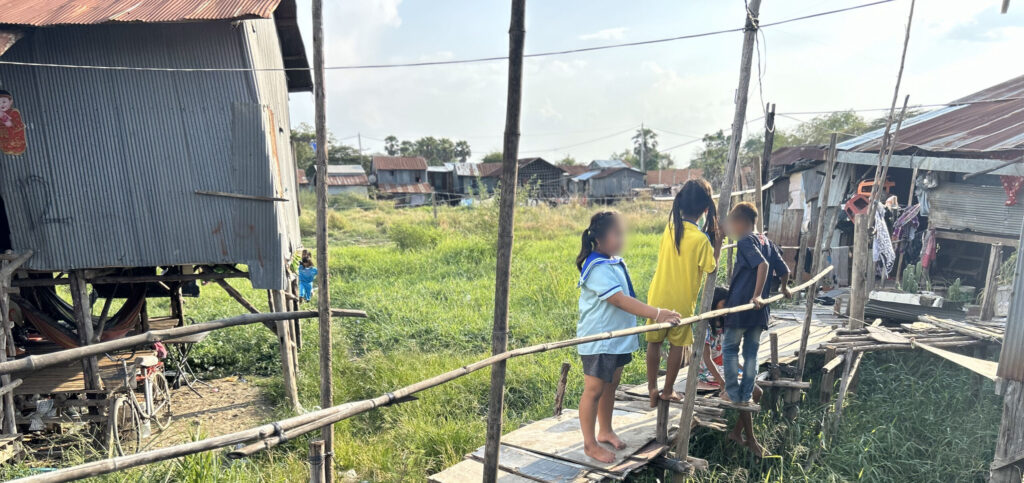
We spent some time at a group of three dwellings. All the homes were formed with the usual wooden platform, a holey corrugated metal roof, and walls that either were metal or a criss-crossed network of battens covered on the inside with tarpaper. No seams between the walls are sealed, of course, so air and rain come in freely. Sometimes local water (rain, spillage) drains under the house, where invariably hangs a hammock. One house had a central platform about 18 inches above the ground. (Imagine that in high water.) Only four feet above was the next “story,” so on the lower level it’s not possible to stand upright. In between these two heights, on either side, were two more platforms, each at a different elevation. One was set up as a queen-sized bed (that is, a mat on the floor) but was, in fact, all the living space there was. Three distinct families live here. Mom, a toddler, and one of our school girls. Grandma, two granddaughters, one of whom is also at our school. I’m not clear on the third group. One of the women who lives here told the teacher that she pays $10 a month to rent the land on which the dwelling sits. Husbands and fathers are away in Thailand or Phnom Penh, if not in jail or dead.
Mothers with young children generally cannot get hired for any kind of a job. There’s no such thing as a babysitter unless you have close relatives. Cambodians over age 25 are likely to have more than five siblings, so there are many instances of siblings or aunts and uncles helping each other out and taking turns caring for grandparents. One of the students we visited that day lives in a nicer (that is, concrete) home that belongs to her uncle, who lives in another city and allows his sister’s family to occupy the house … and take care of Mom, who was lying down in a wooden, box-like structure about four feet off the ground, next to the front door. I don’t know if that’s her regular bed or just a place to be in the shade during the day. We saw several older women like her: shaved head (to denote widowhood), bad teeth, wearing a traditional skirt (that is, a length of cloth wrapped around the body and tucked in at the waist), and a traditional scarf looped over the chest with the ends hanging down the back—no shirt or blouse.
We walked across the flood plain, past a man who was gathering whatever was growing there; I guess it looked as edible as anything else. On the other side we met a family consisting of two young toddlers, a couple of kids eight to ten years old, a girl about 12, grandpa, grandma, and great-grandma, aged 93. The older children had a wooden structure on one side of the footpath, 20 feet distant from the part-concrete house for the older folks and babies. Inside the house was a motorcycle, probably grandpa’s means of making a living. If you have a “moto” you can operate as a taxi service or as a delivery boy and make perhaps $12-15 a day. The problem is, the cheapest moto costs about $1,200, which most folks can’t afford. So they borrow from the banks … at 10 percent interest. Per month.
Our teacher/guide clearly belongs to these people. They know him and they respect him, and I don’t think anyone tried to give him much baloney. He encourages the parents (who have no tradition of respect for education) to keep the kids in school. He alerts Father Michael to instances of illness, injury, eviction, and starvation. He teaches the kids to wash their hands and, sometimes, their teeth. The idea of the teacher “patrolling” like this is not new. St. John Bosco did it in the 1860s when he founded Salesian schools. And public school teachers in New York did it in the days of Theodore Roosevelt and Jacob Riis in “How the Other Half Lives.”
Since this was the first day of school after the New Year break, the teacher was seeking out those who didn’t come to school at all today. One boy “overslept” and missed the bus. (School is 3 km away.) Another “couldn’t find his uniform trousers.” Another boy, about 13, was kept home to help to build a new house for the family. We talked to his mom in front of a wooden platform with a cloth stretched over it as a sunshade. She had a hammock and a small supply of sellable goods, like sodas, fruit juice, snacks. I said to Adam, “She may as well keep the kid home to build the house. The rainy season is coming and it doesn’t look like she has any place except this shelter, and it’s not at all water-proof.” Fifteen feet away was the “new house” the boy is to help build: a framework of what I would call angle iron except that it looked like aluminum, a big cube about 12 feet square and 10 feet high, mounted on extremely uneven ground: bad enough you would definitely slip if you walked across it. No one was working on it. No bricks or wood or sacks of concrete were in evidence. No tools. No one was around who looked like he was free to work on it. Mom was in the hammock.
We did talk to some boys who proudly showed us their new house in-progress. This was a two-story concrete (over brick) building, one room above the other, with a footprint maybe 12 by 18 feet. The boys’ father works in Thailand and sends money for building. Not only did this place have a real door and glass windows, but we heard someone in the rear using an electric saw of some kind.
At one point we met up with a boy who turned out to be a last year’s graduate of our technical school. He looked strong and healthy, especially compared to the other men we saw (and the teacher himself!) but I did not have the impression that he was prosperous. Adam and I did not ask where, or whether, he was working. If the teacher did, I don’t know the reply.
We continued past a two-story concrete block of one-room “apartments” (with en suite toilet/wet room)—unfinished, and presumably abandoned by the builder. Some units were full of debris and trash. Some had locked metal grille doors. Some had squatters living in them. The upper story was vacant, because there was no interior staircase—nor an exterior one.
Adam, being a large man with a pink complexion, was very interesting to most of the younger children in the neighborhood and soon had a gang of kids following him or holding his hand or wrapping themselves around his legs for a “ride.” An otherwise darling little girl no older than five came up to me from out of nowhere. She threw her arms around me, looked up, and grinned happily. All her front teeth were black with rot.
Imagine Adam’s thoughts looking at these kids and remembering his own children, the same ages, at home.
***
Observing all the obstacles facing the people here, you certainly could be forgiven for wondering how on Earth they maintain their faith, drive, and motivation. Just one of these challenges would cause many to throw in the towel; faced with a barrage of them that make living—let along studying—difficult at best, how do they persevere?
As I’ve discovered, Cambodians possess remarkable resilience and faith. They simply refuse to lose hope in spite of such adversity. This is what keeps me going: to answer their hope with hope, their faith with faith, and their resilience with resilience. It’s how Don Bosco modeled life in service to the young, and it’s how Salesian missionaries have stewarded that legacy since their arrival in Cambodia in 2001. Have I made a difference in my time here as an SLM? I would like to think “yes.” At minimum, though, I have believed in my students and have witnessed all of the graces and blessings God has bestowed upon them through the efforts of the Salesian community.

